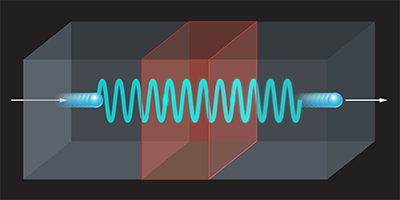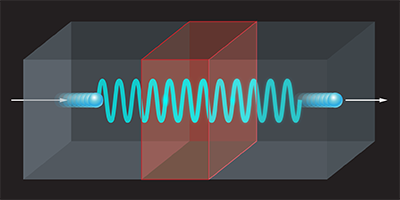Catching Dark Matter Red Handed
Like a classic detective story, the saga of dark matter continues to revolve around circumstantial evidence. Astronomical observations point to unseen mass, but we don’t know what it is. Several experiments are underway to catch and identify the culprit (or culprits) directly, but these often require massive detectors seeking faint fingerprints. But a benchtop approach may have something to offer, as Christian Beck of the University of London, UK, reports in Physical Review Letters. He proposes that one dark matter candidate called the axion may leave clues behind in a relatively small superconducting device.
Axions can take on a number of disguises. For example, photons in a strong magnetic field might decay into axions, which then could pass through a barrier and re-emerge as photons again. This quick-change act has been sought in so-called “light passing through walls” experiments. Beck looks at the inverse process—perhaps dark matter axions could turn into photons while passing through a detector and then re-emerge as axions. If so, these elusive particles might leave behind electromagnetic clues.
Beck’s hypothesis is that a device called a Josephson junction could register the passage of such photons. These junctions consist of a superconducting sandwich enclosing a nonsuperconductor, and typically they find application as ultrasensitive magnetic-field detectors. Beck calculates that axionic photons could produce a very small but entirely measurable signal. What’s more, he suggests that an anomalous signal recorded in 2004 fits the description of axions scurrying through a detector. If borne out by more experiments, the Josephson-junction approach may offer another powerful tool in the dark matter detectives’ kit. – David Voss





